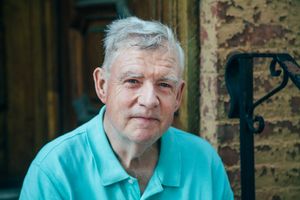
"I was the head of the math department at RPI. And that was really… you know, there were ups and downs, but when I tell people what I am, what I do, what I did, it’s that. And I still do the math, I just don’t get paid for it. *laughs* I’m passionate about math. My field was applied math, so I got to work with mechanical engineers, biologists, and other fields. I was always asking ‘what can I do with math that adds to this field?’ Every time I was successful at that, it was incredibly gratifying.
My desire to learn started back in kindergarten — I was annoyed that they wouldn’t teach me to read in kindergarten. I said, ‘you’re going to teach me to read,’ and they did! *laughs* It’s just who I was. I didn’t think about wanting to push the envelope or anything. I was at school, and I just wanted to learn. My propensity for math came in middle school. Small town, small class. I got a math book and sat in the corner reading it. While everyone else was doing 9th grade math, I was doing 11th grade math. While they were doing 12th grade math, I was doing calculus and other advanced maths. Then I came to RPI which at the time was very friendly to people like me, people who were good, but not great. I got to do a lot of things with people: some were just fellow students, some were professors that recognized I was looking for things to do.
After a few years of being on the faculty, I started working with a nuclear engineer. He and I looked at the big problems of the day, problems that people were interested in. I could do the equations, but he was my connection to reality. We looked at the stuff that needed to be done, and we did it. We changed the way of thinking from doing experiments and making graphs out of those experiments, to putting information into the computer to calculate the physics of what’s going on in order to understand what was happening. I always said trust the equations. If you’ve got the right equation, they’re going to do what’s right. It was revolutionary at the time."